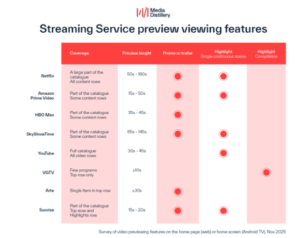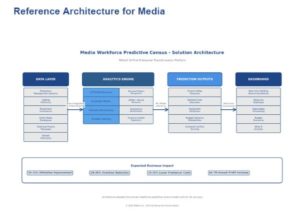Amagi – Embracing cloud technology for a sustainable future
Arpit Malani, Director of Product Development, Amagi
Like many others, the broadcast industry is facing increasing pressure to reduce its environmental impact. While essential for delivering high-quality content, traditional on-premises infrastructure often consumes significant energy and resources. This is due to several factors, including a few that I will be discussing below.
Inefficient power usage: On-premises data centers can be energy-intensive, especially in regions with high energy costs. This is often due to inadequate cooling systems, outdated hardware, and inefficient power distribution. For example, traditional air-cooled data centers may require large amounts of energy to maintain optimal operating temperatures. Additionally, obsolete hardware may be less energy-efficient than newer models.
Excess capacity: On-premises infrastructure often requires overprovisioning to accommodate peak workloads, leading to wasted resources. This means that data centers may need to purchase and maintain more hardware than is necessary to meet average workloads. This excess capacity can consume unnecessary energy and increase operational costs.
Carbon emissions: The energy consumption of on-premises data centers contributes to greenhouse gas emissions, exacerbating climate change. Burning fossil fuels to generate electricity releases carbon dioxide and other greenhouse gases into the atmosphere. These emissions contribute to global warming and climate change, which can have severe consequences for the environment and human health.
The benefits of cloud adoption
- Greener regions: Cloud providers often offer regions that prioritize sustainability, such as areas with abundant renewable energy resources. By choosing these regions, broadcasters can further reduce their carbon footprint.
- ARM-based instances: ARM-based instances, such as Graviton from AWS and Ampere from GCP, are known for their energy efficiency. These instances can offer significant performance gains while consuming less power, making them an attractive option for broadcasters seeking to optimize their sustainability efforts.
- Reduced energy consumption: Cloud providers operate large-scale data centers that can achieve significant energy efficiency through economies of scale and advanced cooling technologies. By leveraging these facilities, broadcasters can significantly reduce their overall energy consumption.
- Optimized resource utilization: Cloud platforms offer flexible resource allocation, allowing broadcasters to scale their infrastructure up or down based on demand. This eliminates the need for excess capacity, reducing energy waste.
- Sustainable data centers: Many cloud providers are committed to sustainability and invest in renewable energy sources to power their data centers. By partnering with these providers, broadcasters can support their efforts to reduce their environmental impact.
Leveraging modern infrastructure
In addition to cloud adoption, broadcasters can further enhance their sustainability efforts by adopting modern infrastructure. There are processors on the market today that offer improved energy efficiency and performance, enabling broadcasters to optimize their workloads and reduce their carbon footprint. For example, these processors often feature advanced power management technologies that can dynamically adjust power consumption based on workload demands. Additionally, they may support virtualization and containerization technologies, which can further improve resource utilization and reduce energy consumption.
By adopting these modern processors and leveraging their energy-saving features, broadcasters can significantly reduce their environmental impact.
A call to action
The broadcast industry has a unique opportunity to lead the way in sustainable practices. By embracing cloud technology and adopting modern infrastructure, broadcasters can reduce their environmental impact and improve their operational efficiency and competitiveness. To maximize these benefits, broadcasters should consider the following strategies:
Standardization of bit rate and resolution: Adopting consistent bit rate and resolution standards across all platforms can significantly reduce bandwidth consumption and energy usage. By optimizing content delivery, broadcasters can minimize unnecessary data transfer and reduce their operations’ overall energy footprint.
Dynamic adaptive streaming: Implementing dynamic adaptive streaming technologies can further optimize bandwidth usage by adjusting the bit rate and resolution of the content based on the viewer’s network conditions. This ensures that viewers receive the best possible quality without consuming excessive bandwidth.
- Content caching: Utilizing content-caching mechanisms can reduce the need for repeated data transfers, especially for frequently accessed content. Broadcasters can minimize latency and reduce network traffic by caching content closer to the viewer, leading to lower energy consumption.
- Intelligent content management: Implementing intelligent content management systems can help to identify and optimize content that is frequently accessed or has high viewer engagement. This allows broadcasters to prioritize content delivery and reduce unnecessary bandwidth usage.
- Network optimization: Optimizing network infrastructure and routing can also reduce energy consumption. By minimizing network latency and improving efficiency, broadcasters can reduce the amount of data that needs to be transferred, leading to lower energy usage.
By implementing these strategies with cloud adoption and modern infrastructure, broadcasters can create a more sustainable and efficient broadcast ecosystem. It’s time for the industry to embrace a more sustainable future.









